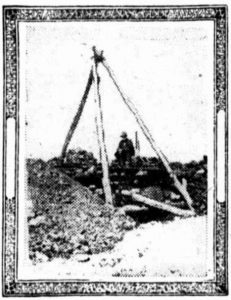 I’m currently researching and writing my next article for The Local, on the subject of the “baby” coal mines of Lambton and Waratah. [Now published here.] These were small operations, involving a few men hewing coal out of primitive shafts and tunnels to be sold directly to householders in the area.
I’m currently researching and writing my next article for The Local, on the subject of the “baby” coal mines of Lambton and Waratah. [Now published here.] These were small operations, involving a few men hewing coal out of primitive shafts and tunnels to be sold directly to householders in the area.
There was great concern in Newcastle in 1922-1923 about the deleterious effects of these unregulated mines on the local environment, with respect to safety, undermining of streets, and damage to water and gas pipes.
In researching this history on the local impact of coal mining I was reminded of the most recent season of the podcast “Australia, If You’re Listening”, on the history of the climate change debate in Australia. Matt Bevan opens the podcast with a quote from the Maitland Mercury in 1912, which shows that concern about the global impact of coal mining has been around for a long time.

“The furnaces of the world are now burning about 2,000,000 tons of coal a year. When this is burned, uniting with oxygen, it, adds about 7,000,000 tons of carbon dioxide to the atmosphere yearly. This tends to make the air a more effective blanket for the earth and to raise its temperature. The effect may be considerable in a few centuries.”
The Maitland Daily Mercury, 5 Jun 1912, p5.
The 7 million tons of carbon dioxide emitted in 1912 from coal is miniscule compared to the 14.8 billion tons of CO2 emitted from the burning of coal in 2021. With this 2000 fold increase in emissions, it won’t be a few centuries before the effect is considerable, it’s here now.

About baby coal mines, there is an entrance to a mine 100 metres down the track at the end of Ridgeway road New Lambton Heights. It is on the left hand side of track going down and about 20 metres in. Near the entrance the roof has collapsed and you can peer in along the tunnel. There is a cutting from the entrance that appears to have crossed the track to a another track that leads down to Addison Road New Lambton. Have always wondered about who mined it.
Then there’s Mordues pit behind Jesmond Park. It supplied coal to steam trams. There is still a substantial cutting into the hill. (I presume its this pit)